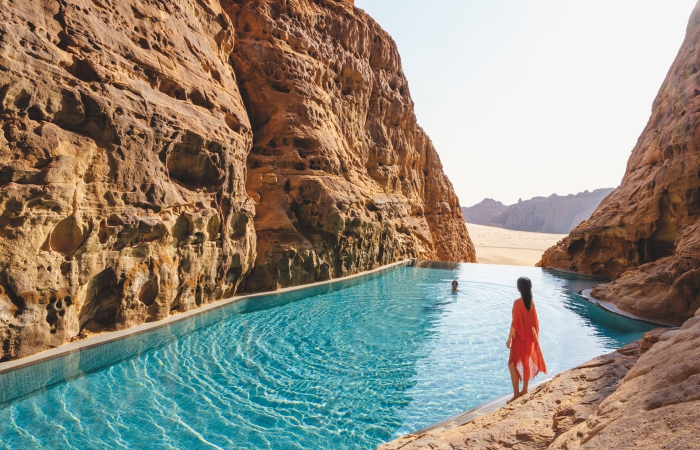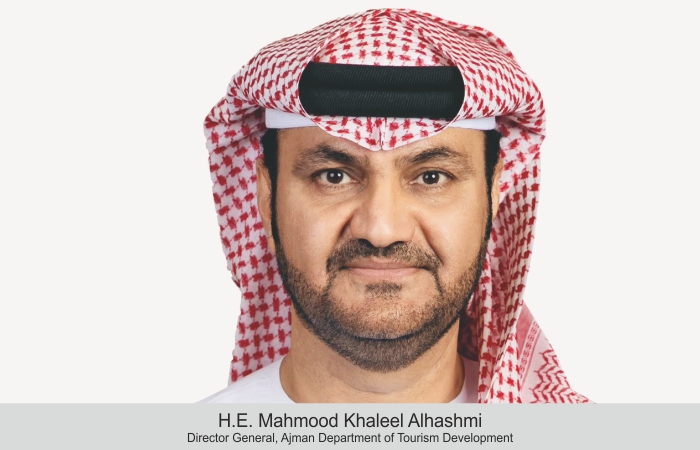After ten years of meticulous planning, the Louvre Abu Dhabi was unveiled in November with a week-long series of celebrations. With its steady promotion as a hub for art and cultural tourism, Abu Dhabi’s Louvre becomes the latest landmark to tap a niche visitor market to the emirate.
SHEHARA RIZLY
Over the years, the emirate of Abu Dhabi has established itself not only as the capital city of the UAE but also as a cultural heritage hub which attracts many visitors from all over the world. Referred to by many experts as the “most ambitious cultural project of the 21st century”, Louvre Abu Dhabi is the first universal museum to have opened in the Arab world. Although art and cultural tourism shares only a very niche segment of the market, it is definitely a higher contributor to the tourism budget.
Located on the waterfront in Abu Dhabi’s cultural district on Saadiyat island, Louvre Abu Dhabi has gained its touch of class and finesse by the Pulitzer prize winning French Architect Jean Nouvel. The iconic architectural masterpiece has a combination of both traditional and contemporary design with cutting edge energy efficient engineering. The museum contains 23 permanent galleries, special exhibition spaces, a children’s museum, auditorium, restaurants, retail and a research centre. The inaugural installation, in its spacious collection galleries, will present 600 works of art, half from its own rich holdings and half consisting of stellar works visiting from its 13 partner museums in France.
Birth of the museum
Opening a new era of dialogue between two of the richest cities in cultural heritage, Abu Dhabi and France signed an inter-governmental agreement to share the universal story with the world. The museums’ permanent collection and some important collections loaned by various prestigious institutions forms a historical narrative which enables visitors a journey from ancient times to the contemporary world.
Exquisite work of art
Externally, the iconic structure is seen in the shape of a dome. This eight layered dome made up of four outer stainless steel layers and four inner layers is separated by a steel structure which is five meters in height. A ray of light penetrates the eight layers before appearing or disappearing, thereby creating a cinematic effect over the sun’s path throughout the day.
Journey of mankind
In the first wing of the gallery, you can witness the ceiling which will open and close at a particular time for the light to transcend. As you look down, you will find yourself standing on the world map, which is a summary of the lands covered by the museum. Some of the main artworks on display portray the long and difficult journey of mankind from age immemorial to the modern era. Visitors can start on a chronological journey from prehistory to present day encompassing 12 chapters including the birth of the first villages, universal religions, cosmography, magnificence of the royal court and the modern world. Louvre Abu Dhabi also features a 270-seat auditorium, restaurant, boutique and café.
Artefacts
Many ancient masterpieces are presented from various collections from all over the world. A Bactrian Princess created in Central Asia at the end of the 3rd millennium BCE, a Grecian sphinx from the 6th century BCE and an Iranian gold bracelet in the shape of a lion are just a few to be named. As you proceed to other wings of the museum, you encounter works from universal religions, including sacred texts such as a leaf from the ‘Blue Quran’ and a Gothic Bible, as well as a Standing Bodhisattva from the 2nd or 3rd century and a white marble head of Buddha from China. Highlights from later periods include an ancient astrolabe, part of a display showing the science of cosmography; a red Chinese lacquer chest of drawers produced in France by Bernard II van Risenburgh, and Giovanni Bellini’s Madonna and Child, representing the emergence of religious art and iconography.
A series of iconic paintings captures the emergence of the modern world, including Gustave Caillebotte’s Game of Bezique, Edouard Manet’s The Gypsy, Paul Gauguin’s Children Wrestling, Osman Hamdi Bey’s A Young Emir Studying, Piet Mondrian’s Composition with Blue, Red, Yellow and Black, René Magritte’s The Subjugated Reader and Pablo Picasso’s Portrait of a Lady. The museum’s contemporary art collection has nine canvases by Cy Twombly and a monumental sculpture by renowned international artist Ai Weiwei. As part of an ongoing programme of commissions, Jenny Holzer and Giuseppe Penone have created monumental site-specific installations, exhibited under the dome in open air and embedded in Louvre Abu Dhabi’s architecture.
 TravTalk Middle East Online Magazine
TravTalk Middle East Online Magazine





